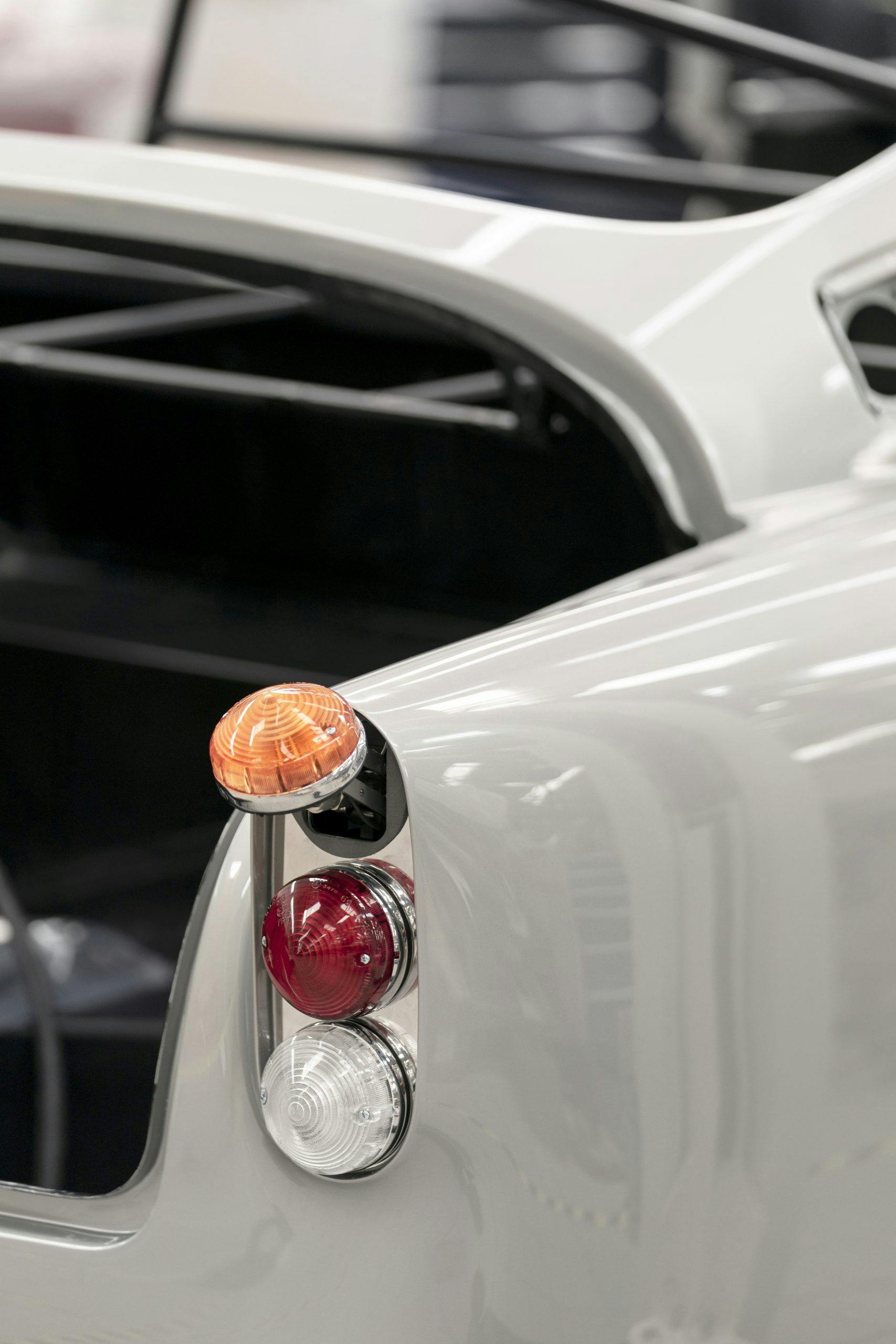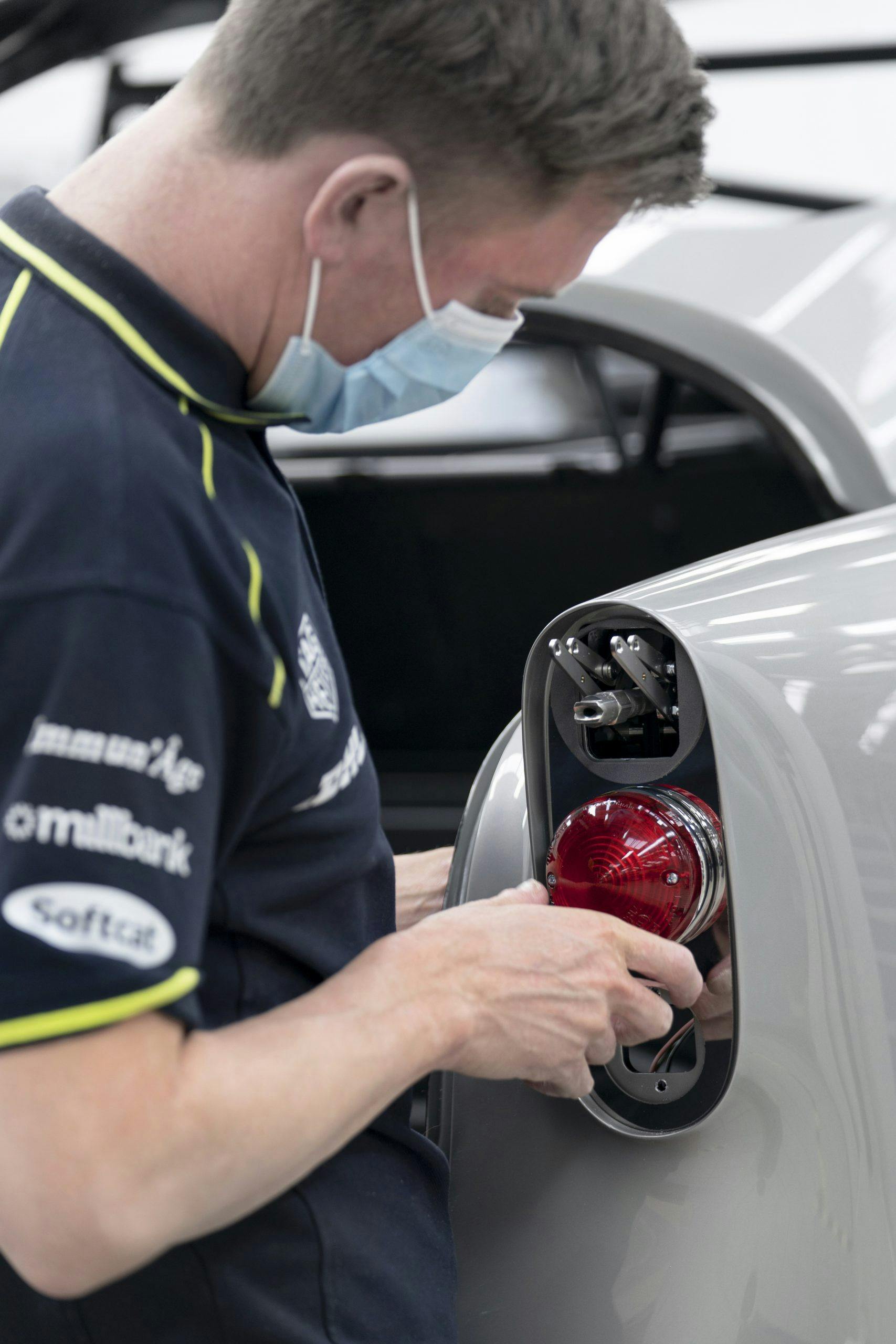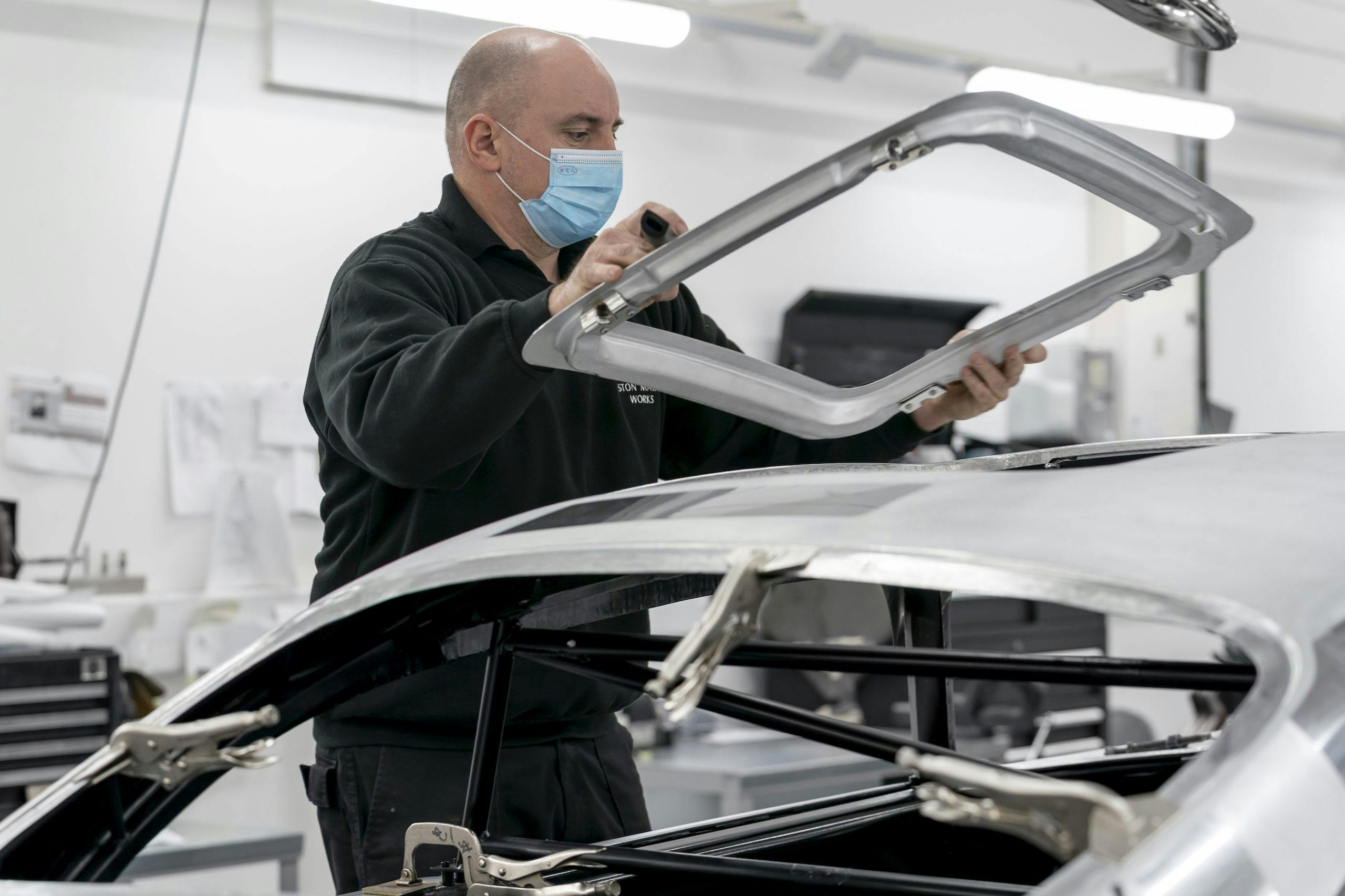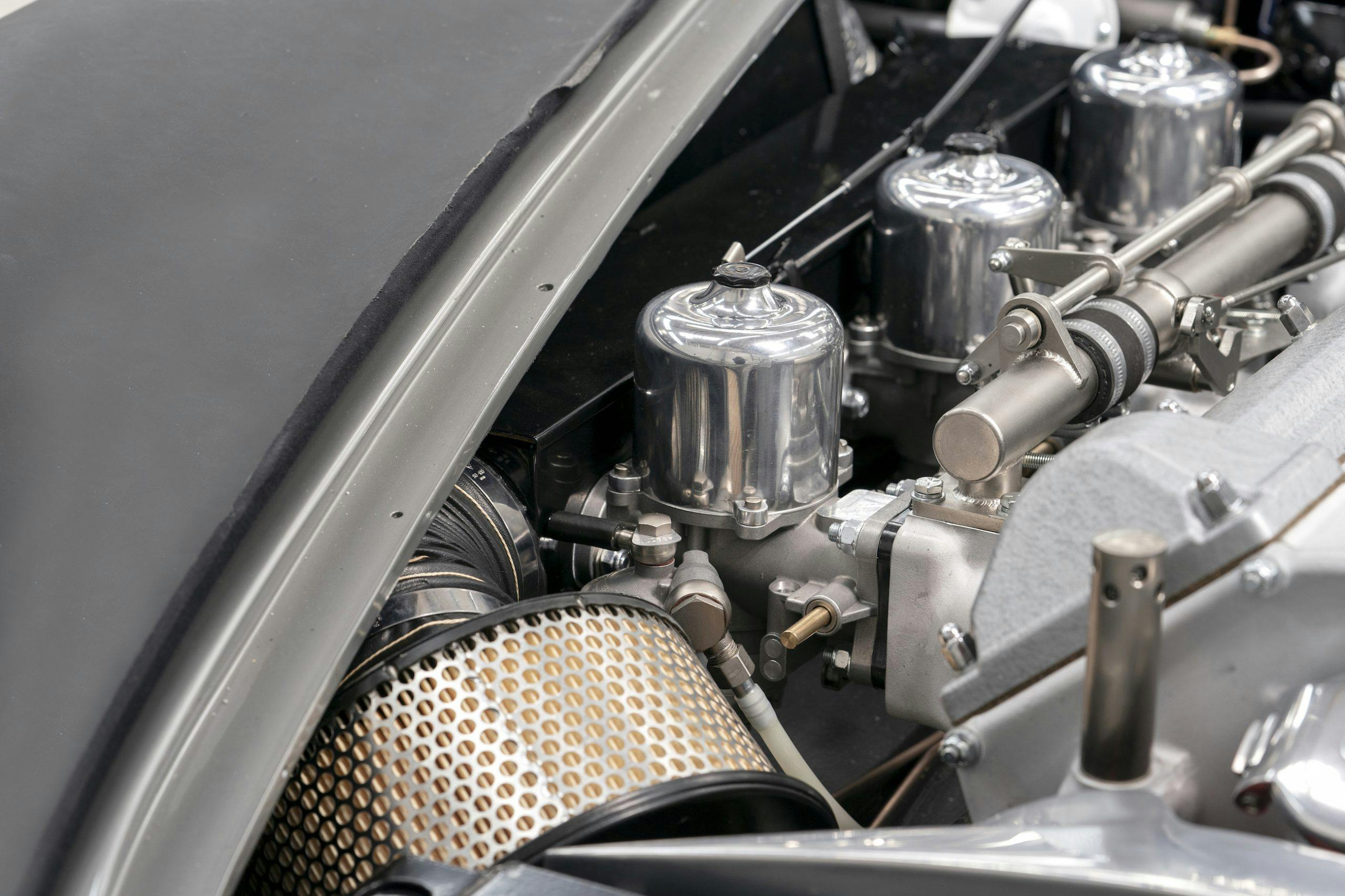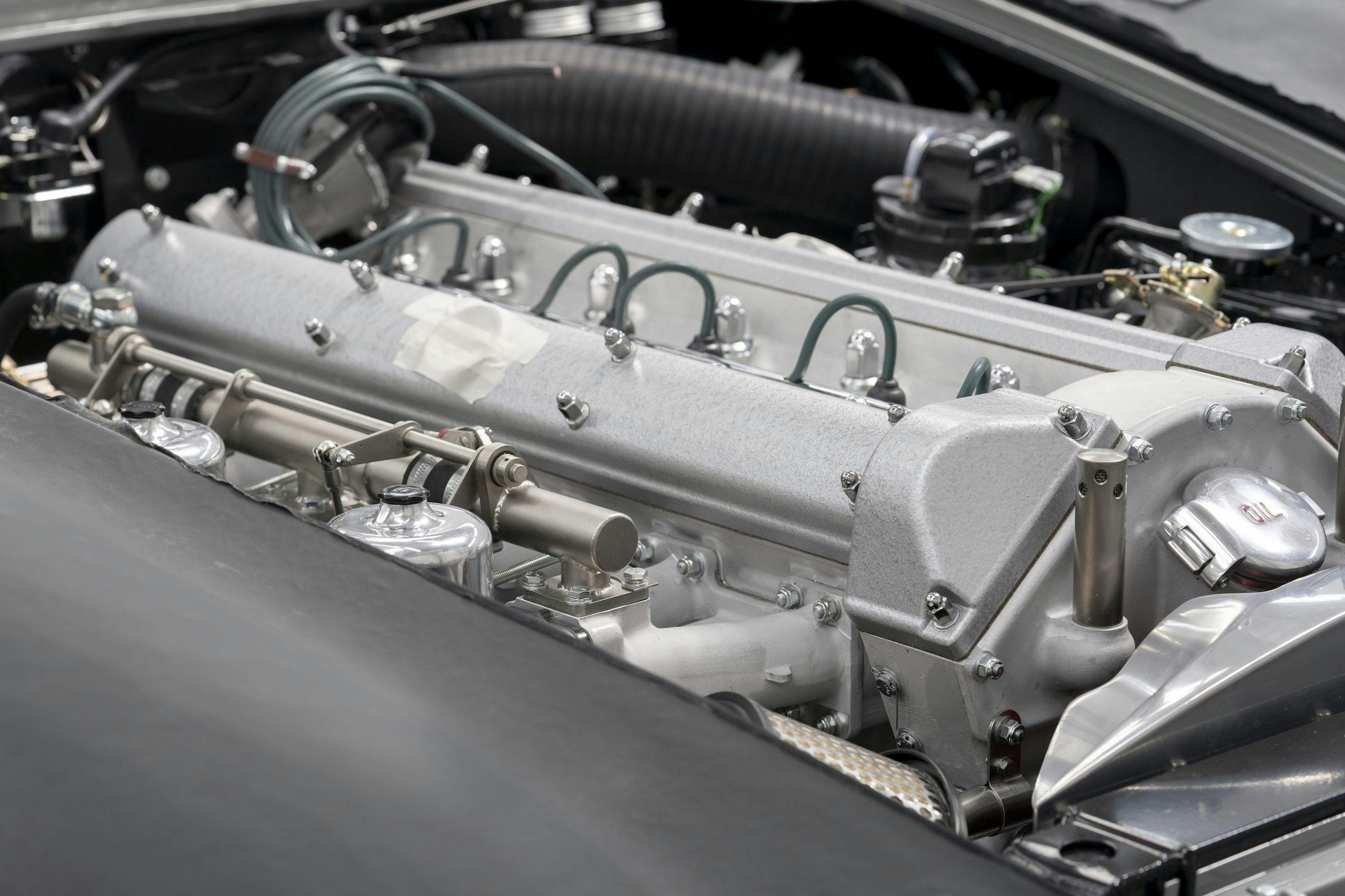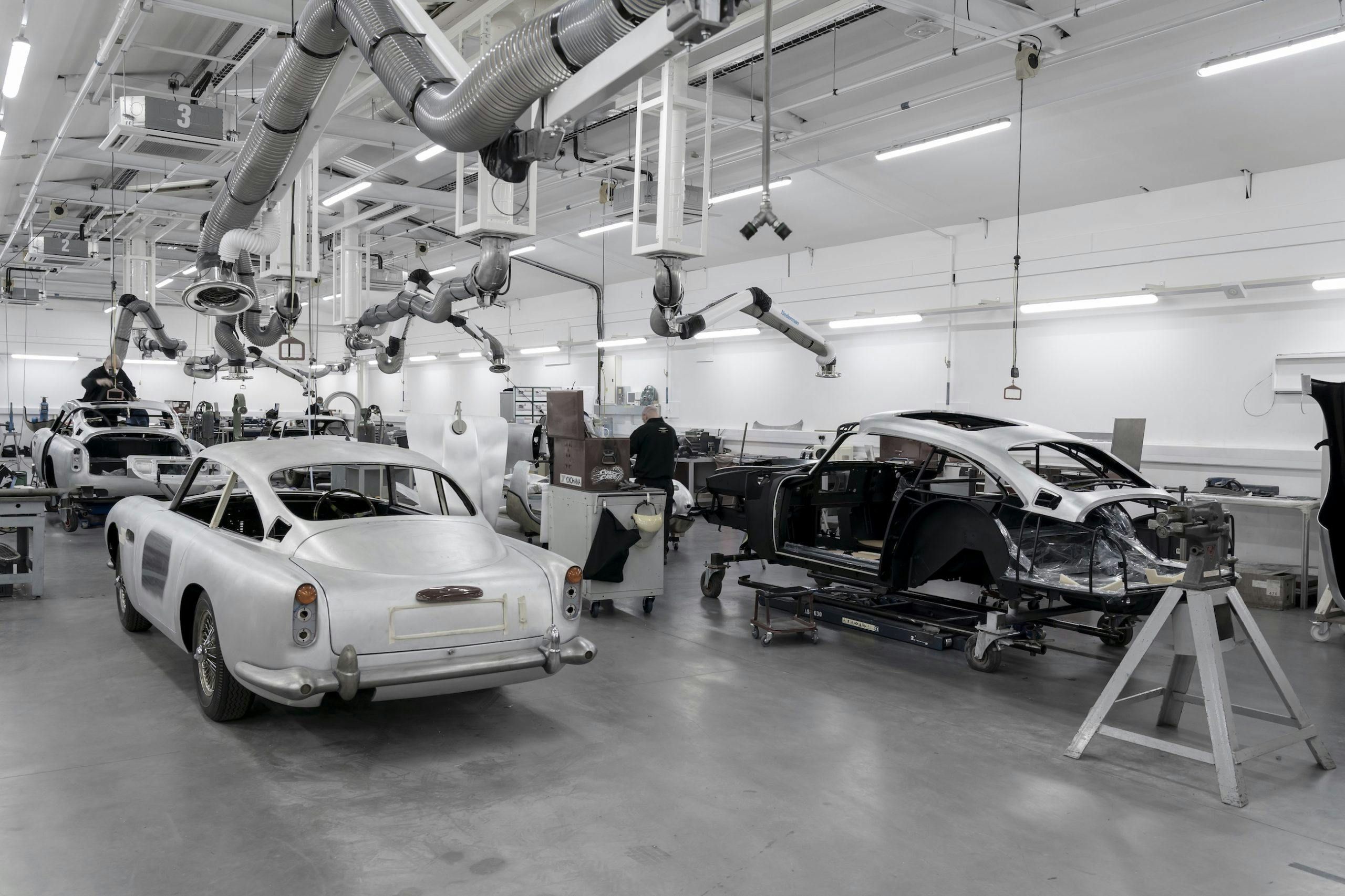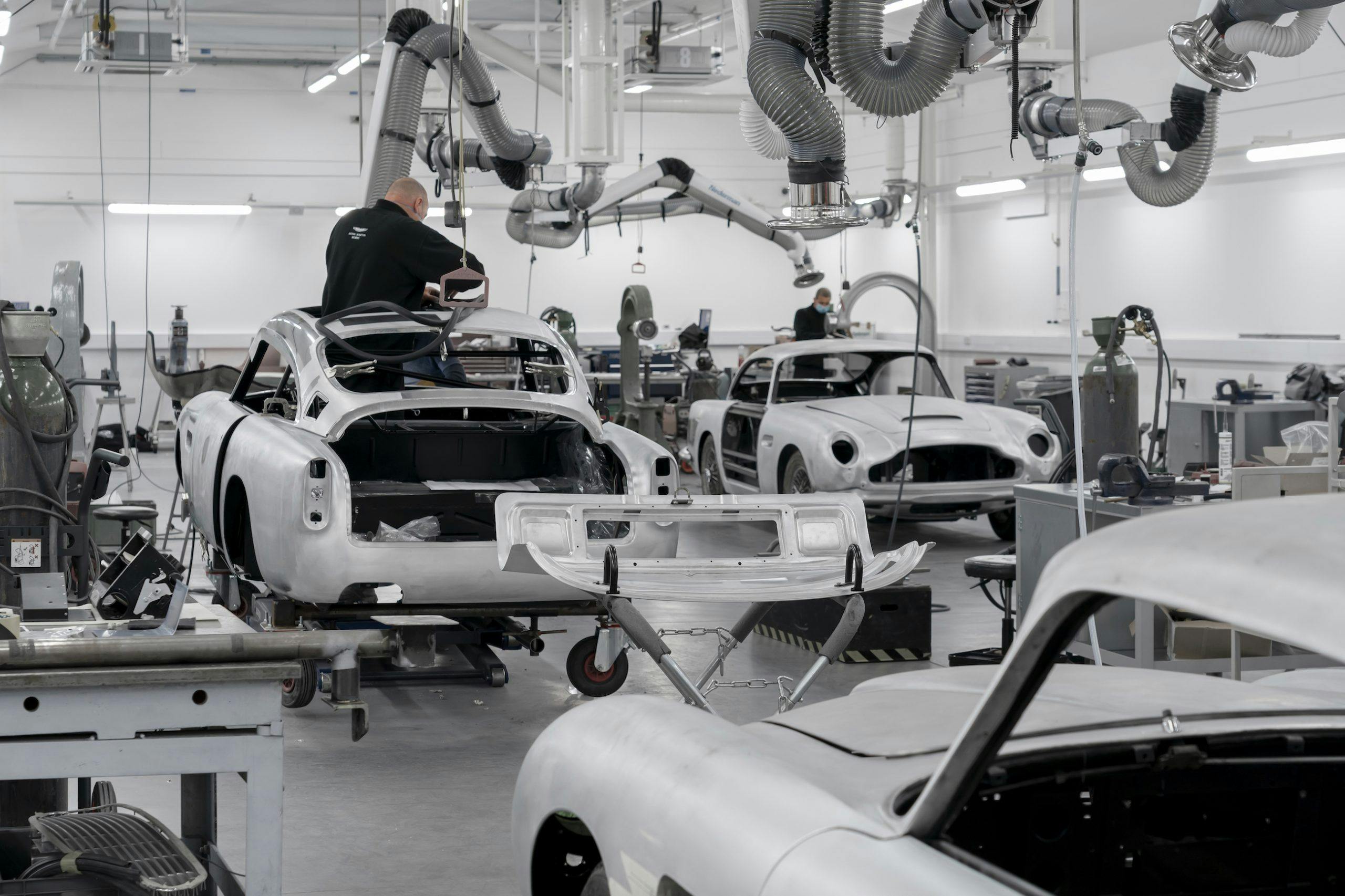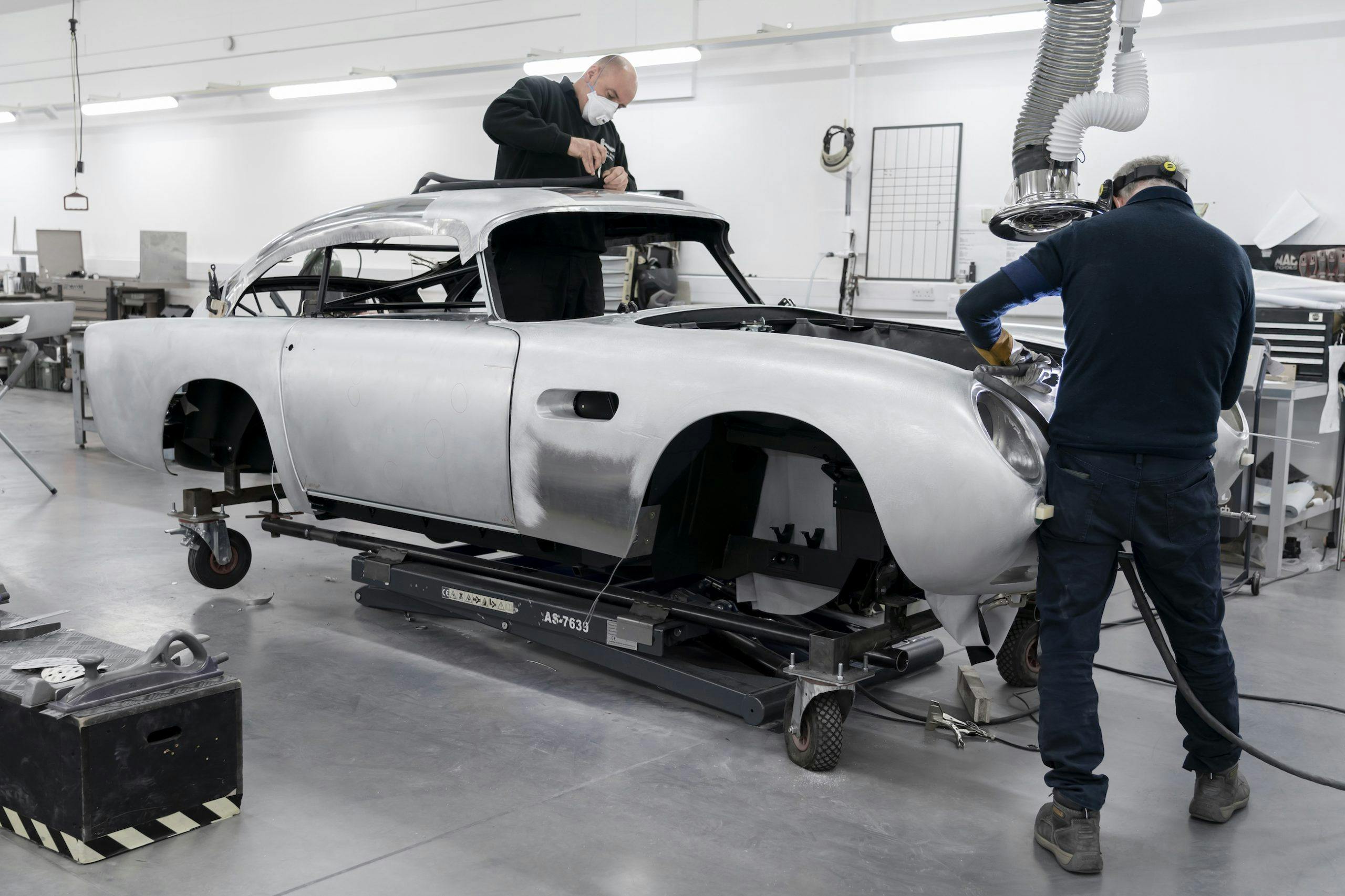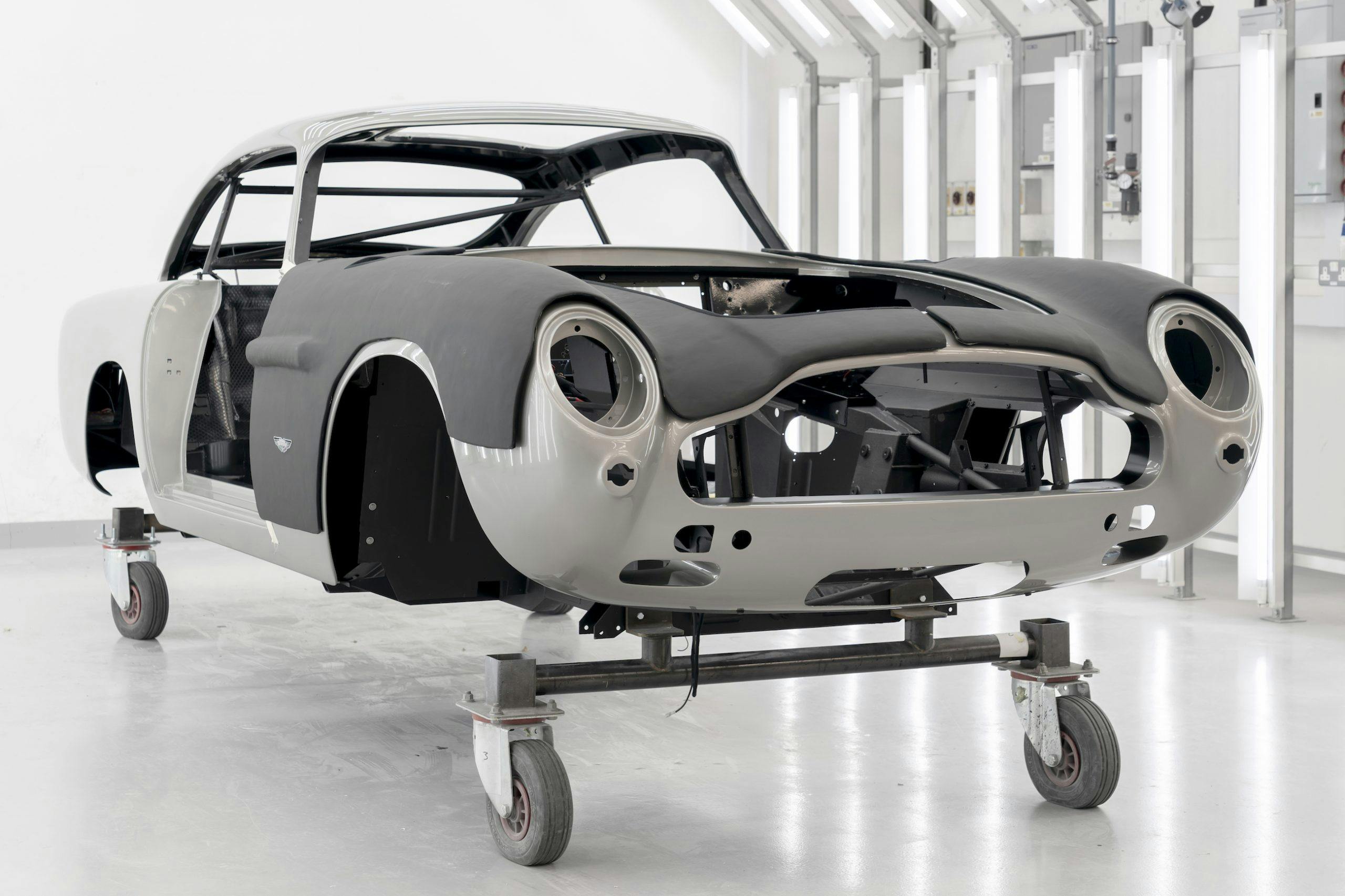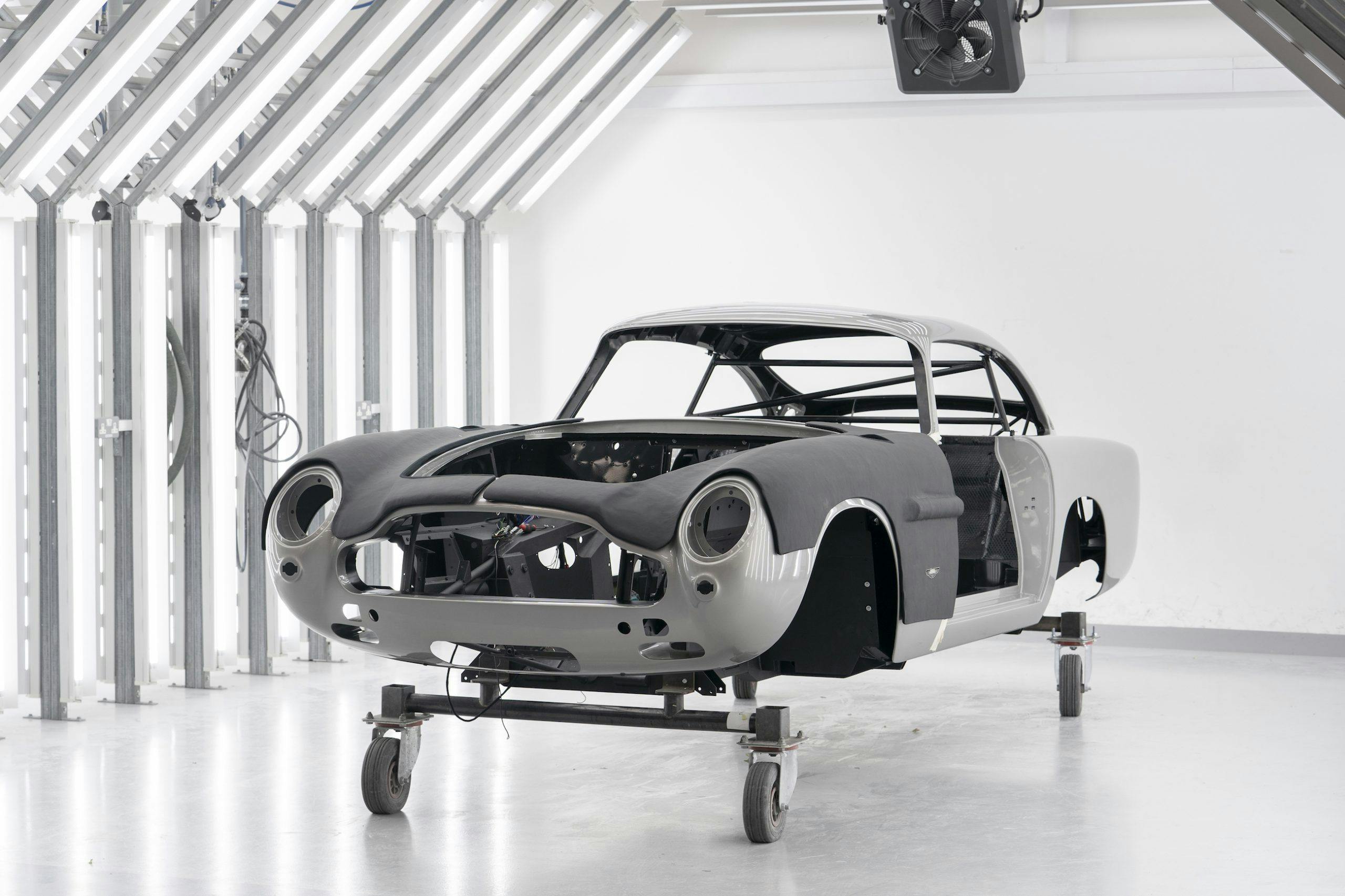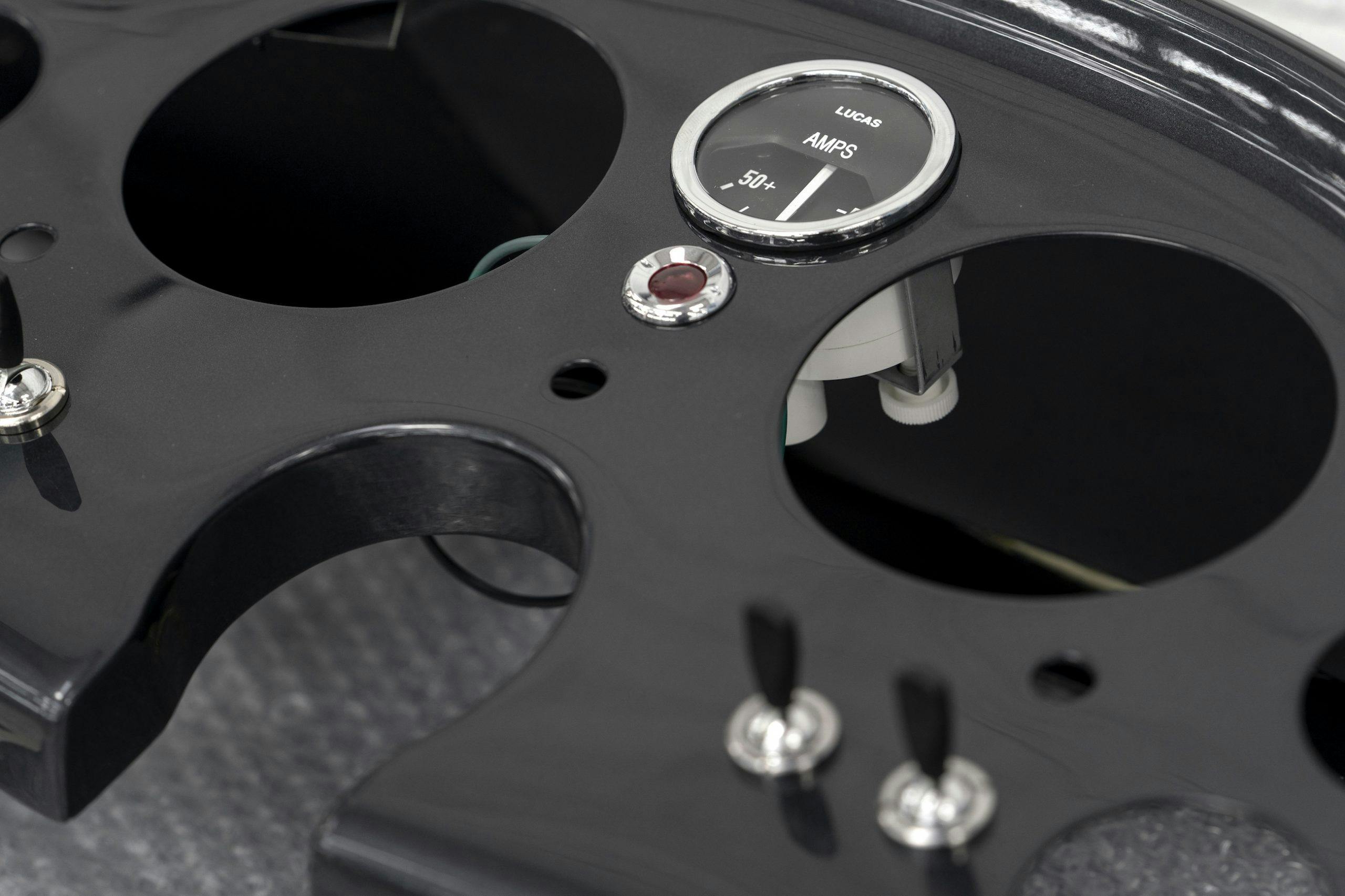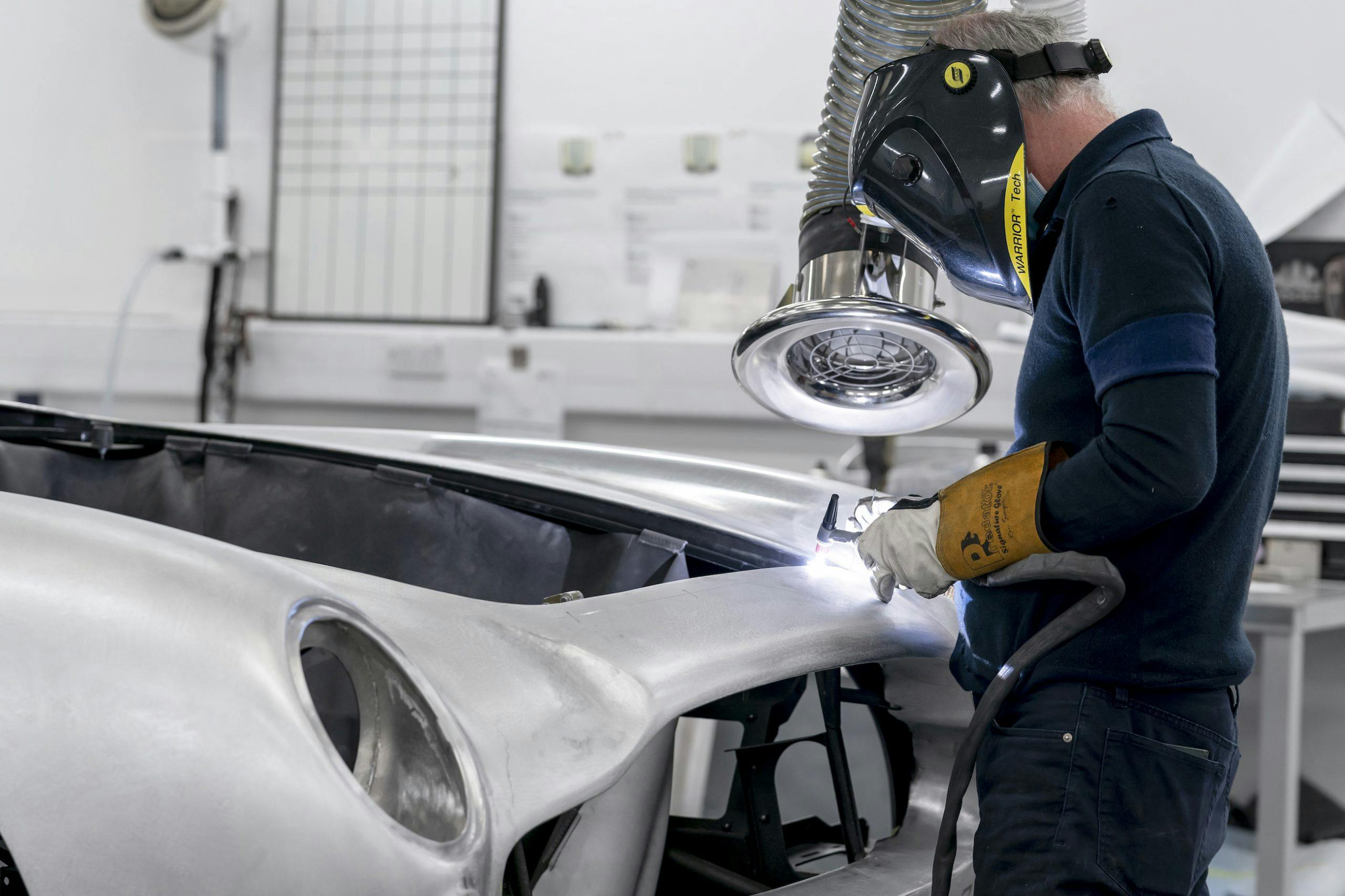The first “Goldfinger”-spec, continuation Aston Martin DB5 just entered production
Although 2020 is not going how anyone planned, at least one of Aston Martin’s most memorable icons of cinematic and automotive history is getting ready to hit the road. Perhaps a private road, that is, because Aston’s 25 painstakingly recreated, James Bond-spec DB5s won’t be street legal. Production of these continuation cars, each loaded to the gills with functioning gadgets, has officially begun—55 years after the last original DB5 rumbled to life in Buckinghamshire, England.

The cars’ gadgets are built to match those in 1964’s Goldfinger flick and, for maximum accuracy, are developed in partnership with EON Productions, the folks in charge of producing the Bond films. The magic happens at Aston’s Heritage Division facility in Newport Pagnell, Buckinghamshire. This isn’t the first resurrection of history accomplished by the highly specialized craftsmen of the Heritage Division; the team produced a run of continuation DB4 GTs before embarking on these Goldfinger-spec cars. Each continuation DB5 requires around 4500 hours—roughly six months, if you didn’t sleep or eat—to build.

Though the devil’s in the details of any restoration or continuation build, the details in this project are incredibly intricate. Chris Corbould, OBE, is a mastermind special effects supervisor who has worked on more than a dozen Bond films, and he’s the man ensuring that the gadgets in the 25 continuation cars match those in Goldfinger as closely as possible. Corbould certainly has his work cut out for him; while a movie may feature several substitute cars—potentially, different cars with different gadgets—each DB5 overseen by Corbould must pack more than 14 functional examples of mechanical trickery. Well, as functional as legally allowed, since James Bond did have access to headlight-hidden machine guns.
While the twin front machine guns and tire slashers are just for show, each continuation car boasts a working, rear smoke-screen delivery system and battering rams, front and rear. There’s also an optional removable passenger seat roof panel—presumably to send a complaining passenger skyward. (Although who’d dream of complaining in a ride this cool?) Inside, there’s a simulated radar screen tracker map, a telephone in the driver’s door, a whole host of armrest and center console-mounted switchgear, and an under-seat tray for, erm, storage. (Please consult Q-branch for further weaponry inquiries.)

That timeless body is comprised of aluminum exterior panels wrapped around an authentic DB5 mild steel chassis. Power comes from a 290-hp, 4.0-liter naturally-aspirated inline-six, replete with a six-plug head, three SU carburetors, and an external oil cooler. A five-speed ZF manual gearbox handles power delivery to mechanical limited-slip differential that turns the rear wheels. Brakes are servo-assisted Girling-type steel discs, while the steering setup is an unassisted rack-and-pinion. The whole package rides on coil-over spring and damper units with an anti-roll bar at the front, and a live axle rear suspension with radius arms and a Watt’s linkage at the rear.
The asking price for this much awesome? A cool $3.02 million. That’s not even half of the cost for one of the four original Bond DB5s—one recently sold for a whopping $6.38M at RM Sotheby’s 2019 Monterey sale. Still, given the recent leadership changes at Aston Martin and reshuffled development priorities, we’re glad to see this project rumbling towards the finish line.
The DB5 will make a comeback in the upcoming Bond film No Time to Die, which has been postponed until November of this year due to the pandemic. If you’re one of the fortunate 25 customers of these Goldfinger-spec cars, you may receive your DB5 in time to celebrate the film’s premiere—Aston says that the first customer deliveries for the Goldfinger DB5 Continuation cars will begin in the second half of 2020.
